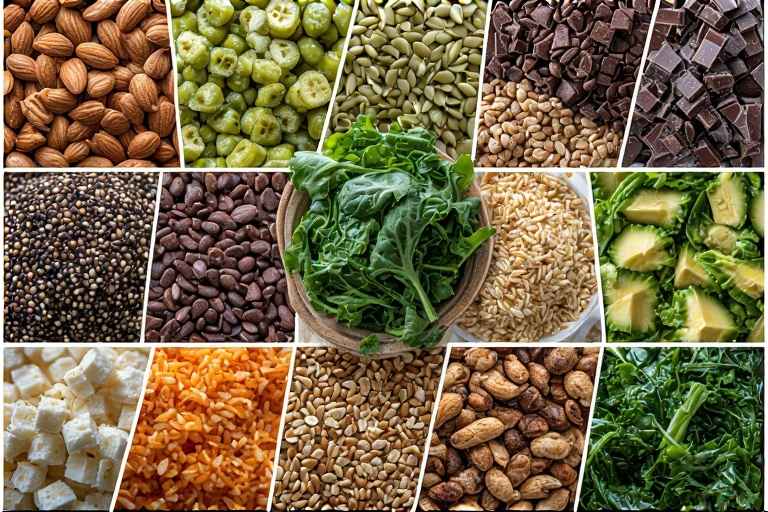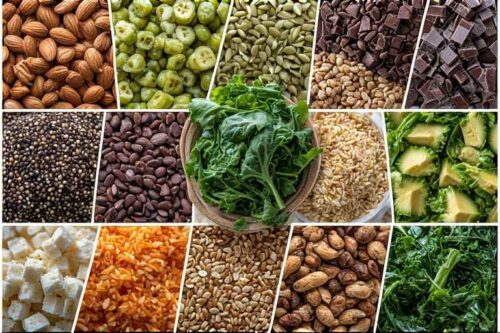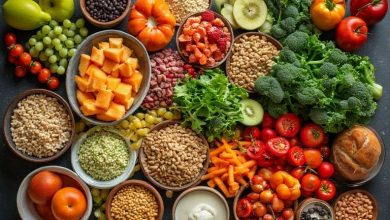

Top 25 Magnesium Enriched Foods That Surprisingly Changed My Energy and Sleep
I Thought I Was Just Tired… Turns Out, I Was Magnesium Deficient
So here’s the truth:
For about a year, I was dragging myself through every single day. I’m talkin’ 3 cups of coffee before noon, chronic eye twitches, weird muscle cramps, and a level of stress that made me borderline intolerable (sorry to my dog and boyfriend).
At one point, I seriously thought I had a thyroid issue. Or adrenal fatigue. Or… maybe just plain ol' burnout. Bloodwork looked “fine,” but I felt like garbage. Like… walking, talking, emotionally-snapping trash.
Then, completely by accident, I came across a Reddit thread where some random user said magnesium turned their life around.
Magnesium? Really?
It sounded like wellness fluff.
But I was desperate — so I started paying attention. I didn’t jump straight to supplements. I actually dove into the food side of things first. And holy hell — it made such a difference.
Here’s what happened. And yeah, here are the top 25 magnesium enriched foods that actually made me feel like a functioning human again.
Wait… So What Is Magnesium Really Supposed To Do?
I’m not gonna bore you with textbook definitions, but let me give you the real-world version:
Magnesium is like the background tech support of your body.
It doesn't scream for attention like protein or caffeine. It just silently keeps stuff running:
-
Calms your nervous system down (like, actually makes you less of a panicked wreck)
-
Helps your muscles chill out (bye, random leg cramps at 2 a.m.)
-
Keeps your energy steady (no more feeling like you’re gonna face-plant at your desk)
-
Makes sleep hit better — way deeper and faster
Once I started eating magnesium rich foods intentionally, I could literally feel the shift within a week or two. It wasn't dramatic. It was subtle. But oh my god — it was real.
Here's Exactly What I Ate — My Top 25 Magnesium Enriched Foods
No, I didn’t go full wellness guru. I kept it casual, practical, and budget-friendly.
But I did try every single one of these, and these are the 25 that made the biggest difference — not all at once, but sprinkled across my weeks.
🥜 1. Almonds
A handful before bed was my go-to. I noticed fewer sugar cravings late at night. Bonus: no more jaw tension in the morning.
🥬 2. Spinach (especially sautéed with garlic)
Game-changer in my omelets and smoothies. Pro tip? Wilt it in olive oil and sneak it into literally everything.
🍫 3. Dark Chocolate (at least 70%)
I called this my “emergency chill pill.” A square after work felt like dessert and therapy.
🥣 4. Pumpkin Seeds
Crunchy, salty, magnesium-packed — I’d toss them on salads or eat them like trail mix. They’re honestly addictive.
🥑 5. Avocados
Yes, they’re trendy. But they also made my digestion smoother (TMI?) and helped me feel full in a calm, non-bloated way.
🥜 6. Cashews
Perfect for that 4 p.m. slump. Plus they’re one of the best vegan magnesium sources.
🫘 7. Black Beans
I made “lazy tacos” with these and honestly felt less bloated than when I used beef.
🐟 8. Mackerel
High in magnesium and omega-3s. I was scared to try it at first, but paired with lemon and hot sauce? Not bad.
🍌 9. Bananas
I thought bananas were just potassium bombs, but nope — they're magnesium buddies too. I started freezing them for smoothies.
🥜 10. Peanut Butter (natural, not the sugary stuff)
One spoon = comfort. Also, it weirdly helped with my anxiety.
🥣 11. Oats
Made overnight oats my personality for 2 months. Added chia seeds and cacao powder for an extra magnesium punch.
🧀 12. Swiss Cheese
A surprise winner! It has a decent magnesium content and helped my cheese addiction feel “healthy.”
🥦 13. Broccoli
Steamed, roasted, or in stir-fry — it became my magnesium stealth vehicle.
🍠 14. Sweet Potatoes
A magnesium-rich comfort food. I baked them with cinnamon and a dash of sea salt — pure therapy.
🫘 15. Edamame
Obsessed. I buy the frozen packs and steam 'em with sea salt. They’re like healthy popcorn.
🐟 16. Salmon
Magnesium + protein + healthy fat = the trifecta. Also made me sleep like a bear in hibernation.
🍞 17. Whole Wheat Bread
Swapped my white bread toast for this, and it kept me full way longer.
🌰 18. Brazil Nuts
Not my fave taste-wise, but 2 of these a day worked magic. Magnesium plus selenium? Yes, please.
🌱 19. Quinoa
Not as annoying as people make it sound. Tastes nutty, and kept me full without that crashy rice feeling.
🥛 20. Soy Milk
I’m not a big milk drinker, so this was an easy way to get some extra magnesium in.
🥄 21. Chia Seeds
I started sprinkling these into yogurt. I don't even taste them, but I feel them.
🧄 22. Okra
Southern staple that surprised me. A bit slimy, yes, but super underrated for magnesium.
🌽 23. Corn (especially roasted)
Reminded me of summer cookouts. Sweet, salty, satisfying — and quietly magnesium-rich.
🍃 24. Collard Greens
I avoided them forever (sounded gross tbh), but cooked right? They’re deeply comforting.
🍚 25. Brown Rice
A side dish savior. I started doing stir-fries with this and it kept my blood sugar way more stable.
Not Gonna Lie, I Messed Up a Lot
Let’s be real: I didn’t go from magnesium-deficient zombie to wellness goddess overnight.
I overdid it with nuts once and ended up bloated like a balloon. I also tried this super hyped magnesium supplement from TikTok and it gave me… intense bathroom adventures 💩.
Lesson? Food first. Then supplements if you really need them. And always — always — check the label.
Also, pro tip: pair magnesium foods with a little vitamin B6 and calcium. It helps with absorption. I started doing eggs + spinach, or salmon + sweet potato. Magic combos.
Common Questions I Got From Friends (And Randoms on Instagram)
“Can you just take a supplement instead of eating all this stuff?”
Sure, but food works slower and steadier — and honestly, I trust it more. My body responded way better when I ate the magnesium instead of popping it.
“How long did it take before you noticed a change?”
About 10 days. Energy got smoother. Mood swings got less… swingy. Sleep became deeper. Like, dream-filled, wake-up-refreshed kind of sleep.
“What’s the best time to eat magnesium foods?”
I leaned toward evenings. Almonds, dark chocolate, pumpkin seeds — they helped me wind down.
Real Talk — Was It Worth It?
YES.
My anxiety dropped. My focus came back. I didn’t need to mainline espresso just to answer emails. And I wasn’t collapsing at 7 p.m. anymore.
Also — weird bonus? My periods got less intense. (No idea if that's placebo, but I’ll take it.)
If you’re constantly feeling “off” but your labs are normal? Check your magnesium. Or at least start adding a few of these foods.
Honestly, magnesium became my quiet little sidekick. Never flashy. Never loud. But always working behind the scenes, keeping me sane and stable.
If I had to pick just five foods to start with?
🥑 Avocados
🥬 Spinach
🍫 Dark chocolate
🥜 Almonds
🫘 Black beans
Start there. Then build. Your nervous system will thank you. So will your sleep, your mood, your energy, and — no joke — your poop schedule. 😅


